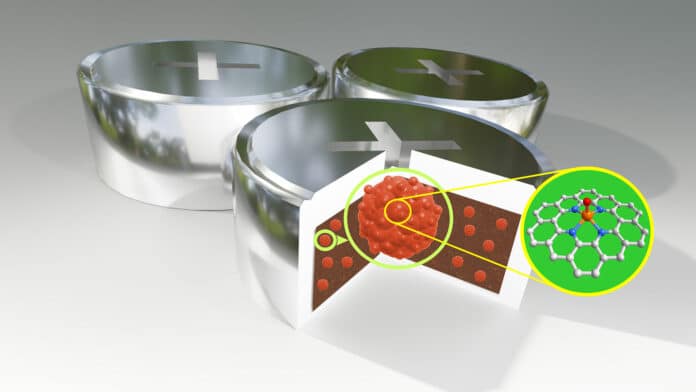Developing renewable energies lies at the very core of the energy transition. The long-term transformation towards renewable energies is inconceivable without modern energy storage technologies. These include batteries, which temporarily store electricity in the form of chemical energy. Essential to their efficiency is the availability of suitable catalysts that allow the relevant chemical reactions to proceed in an optimized manner.
Today, platinum-based catalysts are the benchmark in battery chemistry for commercial applications. However, they come with a disadvantage: platinum is found only in small quantities in the earth’s crust and is, therefore, very expensive.
To this end, scientists from Helmholtz-Zentrum Dresden-Rossendorf (HZDR), a Dresden-based research laboratory, have developed a novel catalyst with the base metal zirconium. The new catalyst can replace platinum and still transform the battery into a powerhouse.
Researchers say the novel catalyst significantly improves the battery’s charging and discharging performance. It also has excellent durability – after 130 hours of operation, the test battery still retained 92% of its original current.
The team explores the chemical-physical properties of battery catalysts. These are often used in the form of metal nanostructures on suitable support materials, with their metal atoms acting as catalytically active sites. The size of the metal particles used is important for the performance of such catalysts. Experience from research shows that the catalytic effectiveness of the metal atoms generally increases the smaller the metal particles that house them are.
“The ultimate frontier is the single-atom catalyst: isolated metal atoms individually distributed on a support,” explains Dr. Minghao Yu of TU Dresden. He crafts catalysts cantered on single transition metal atoms – such as zirconium – trapped in a carbon matrix by neighboring carbon or nitrogen atoms lying in a plane.
“In our case, however, we also have an oxygen atom as an additional coordination partner above our metal, which leads to further interaction with the electronic structure of the zirconium,” Yu says, highlighting a special feature that could lead to a new design strategy for advanced single-atom catalysts.
The researchers had to keep an eye on one effect of miniaturization. Decreasing particle size promotes the agglomeration of those very same particles into small clusters. This, in turn, leads to limited performance, especially at high operating current densities. The use of a suitable carrier material that interacts strongly with the metal prevents this agglomeration and creates stable, finely distributed metal clusters with high catalytic activity. With a well-defined and uniform distribution of metal atoms, the catalysts can achieve high activity and selectivity.
“In our case, we isolated our synthesized material on the surface of quartz spheres, which have a porous structure advantageous for catalytic processes. In our arrangement, we found a pronounced aversion of zirconium to agglomeration, so we were able to produce catalysts with a high zirconium load. As a result, we have achieved a record-breaking power density among all zinc-air batteries previously made with single-atom catalysts,” reports Dr. Agnieszka Kuc from the Institute of Resource Ecology at Helmholtz-Zentrum Dresden-Rossendorf (HZDR).
Journal reference:
- Dr. Xia Wang, Dr. Yun An, Dr. Lifeng Liu, Lingzhe Fang, Dr. Yannan Liu, Jiaxu Zhang, Dr. Haoyuan Qi, Prof. Thomas Heine, Prof. Tao Li, Dr. Agnieszka Kuc, Dr. Minghao Yu, and Prof. Xinliang Feng. Atomically Dispersed Pentacoordinated-Zirconium Catalyst with Axial Oxygen Ligand for Oxygen Reduction Reaction. Angewandte Chemie International Edition, 2022; DOI: 10.1002/anie.202209746
